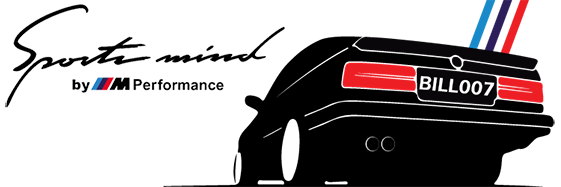Λοιπόν πάμε ένα ένα.Δεν τίθεται θέμα παρεξήγησης.Κουβέντα κάνουμε
Άλλωστε για εμένα προσωπικά το θέμα έχει πάρα πολλές παραμέτρους.
Ο S62 είναι γνωστό αξιόπιστο ατμοσφαιρικό μοτέρ με 408 ουκ ολίγα άλογα.
Το κιτ της ESS προσφέρει και αυτό στο stage 2 450 αν θυμάμαι καλά.
Ο κομπρέσσορας της ASA (τέτοιους χρησιμοποιεί και η G-power) είναι πάλι στα ίδια ανάλογα που θες να παίξεις σε πιέσεις.
Δεν μπορούμε να συγκρίνουμε ένα κλειστό ατμοσφαιρικό μοτέρ με οποιαδήποτε βελτίωση σε θέμα αξιοπιστίας και αντοχής.
Γι'αυτό κιόλας μίλησα περι "άκυρου".
Στα άλογα τα ίδια θα είναι πάνω κάτω σε απόδοση στο δρόμο.Διαφορά θα δεις μόνο σε κόντρα (γι'αυτό μίλησα για το γείτονα),αν το ένα είναι 420 και το άλλο 450...
Συν ότι στην βελτίωση πάντα πρέπει να είσαι στην τσίτα.Οσο καλό όσο χρυσό και να είναι το κιτ,κάτι θα βγει...
Τώρα πάμε στο χρηματικό που μάλλον ενδιαφέρει περισσότερο.
Αν βάλεις κάτω τα λεφτά για το κιτ και τα λεφτά για το μοτέρ ///Μ, στα ίδια είσαι σαν αγορά.
Σαν αναλώσιμα και συντήρηση το ///Μ θα κοστίσει λίγο παραπάνω,αλλά το κεφάλι σου θα είναι ήσυχο.
Δεν ξέρω,αλλά η λογική μου πλέον είναι καλύτερα κάτι παραπάνω και ησυχία,παρά λίγο φτηνότερα και συνεχώς στην μπρίζα (σε όλα τα θέματα)
Προσωπική μου άποψη,καλύτερα η ατμόσφαιρα όταν η διαφορά δεν είναι χαοτίκη
Για τα κιτάκια της ESS υπάρχουν πολλά παιδιά που φοράνε σε 3λιτρο ήδη,για παράδειγμα ο Bαγγέλης κατα φόρουμ DeepBlue καθώς και αρκετοί ακόμα.Οπότε μπορούν να σου πουν περισσότερα για αυτό το κιτ.
Υ.Γ Οι περισσότεροι έβαλαν τα κιτ,όταν τα μοτέρ ///Μ (τύπου S62,S54) ήταν απλησίαστα!Ας το κρατήσουμε και αυτό στο μυαλό μας...
Συμφωνώ με όλα τα παραπάνω.Με διαφοροποίηση ότι δήλωνει όπως είπες φίλε race.Δυστηχώς δεν είναι αξιόπιστα τα g-power απ'αυτά που διαβάζω σε φόρουμ του εξωτερικού.Το θέμα g-power μου άρεσε πολύ,δυστηχώς όμως μάπα το καρπούζι.Γιατί με την αύξηση της ιπποδύναμης τους ξέφυγε το θέμα της μετάδοσης και εκεί έγινε το μπαμ και όχι μονο...
->Αυτή είναι η δική μου άποψη.Δεν είναι αλάθητη,όπως τίποτε σε αυτό τον κόσμο.<-














 Απάντηση με παράθεση
Απάντηση με παράθεση



 Δ.Ν.Τ
Δ.Ν.Τ 